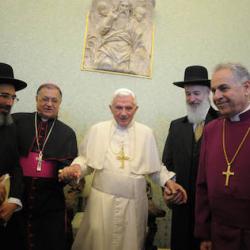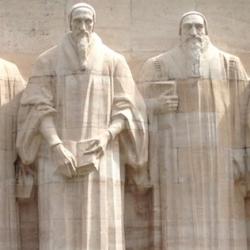In his Spirit of Protestantism, Robert McAfee Brown argues that catholicity was a major concern of the Reformation. From the viewpoint of the Reformers, “medieval Christendom had surrendered the notion of catholicity to a limited and distorted understanding of the Christian faith. And the Reformers, in trying to recapture the wholeness and universality of the faith, were simply trying to be true ‘catholics’” (19).
Thus, “it is no part of the spirit of Protestantism to be anti-Catholic.” Reformers and their heirs called themselves “catholic” and referred to the “catholic” church without hesitation: “the true Protestant considers himself a member of the catholic church of Jesus Christ, reformed; the universal church that was reconstituted so as to be faithful to its Lord the church that was rescued at the time of the Reformation from many corruptions by the renewing power of the Holy Spirit; the church that must continue to be rescued in every day and age from the new corruptions that constantly threaten it” (19).
But that implies that the Reformation is ongoing. If there are always corruptions threatening the church, the work of reform can never be completed. The lesson of the catholic Reformation is not, “We’ve arrived; now, steady on til Jesus returns.” Rather, the lesson is “that the catholic faith is recoverable. It can break out of the strongest chains that men put around it. It has done so in the past, and the sis of men in the church is such that it will need to do so again and again in the future” (20).














